
Auditable processes
A complete version history of every object and action is retained.

Repeatable calculations
Any prior calculation can be replicated in full with just three clicks.

Zero change risk
Self-serve with confidence — trac guarantees zero change risk.
The trac guarantee
Comprehensive platform controls
A new approach to analytics where transparency, auditability, and repeatability are non-negotiable - contols built-in at the platform level.
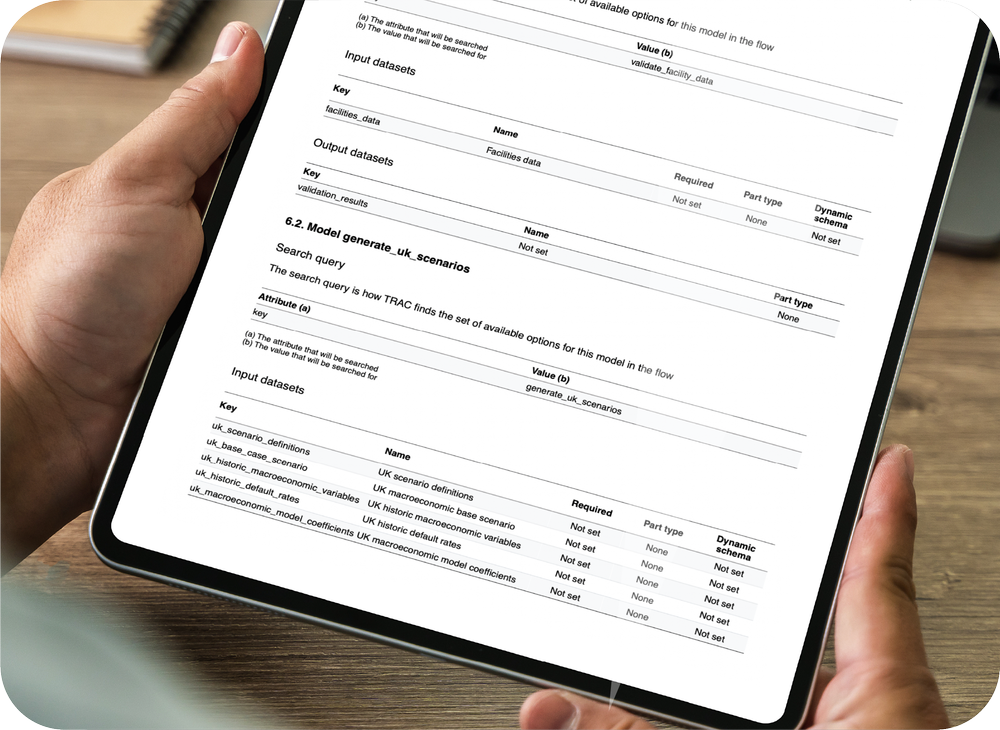
Self-documenting
Fully-automated governance documentation
A complete metadata representation of all the platform objects, processes, and calculations ensures you have comprehensive, governance-ready documentation at the your fingertips, with no manual input needed.
Repeatable
Faithfully recreate any prior calculation in minutes
A complete metadata representation of all the platform objects, processes, and calculations ensures you have comprehensive, governance-ready documentation at the your fingertips, with no manual input needed.
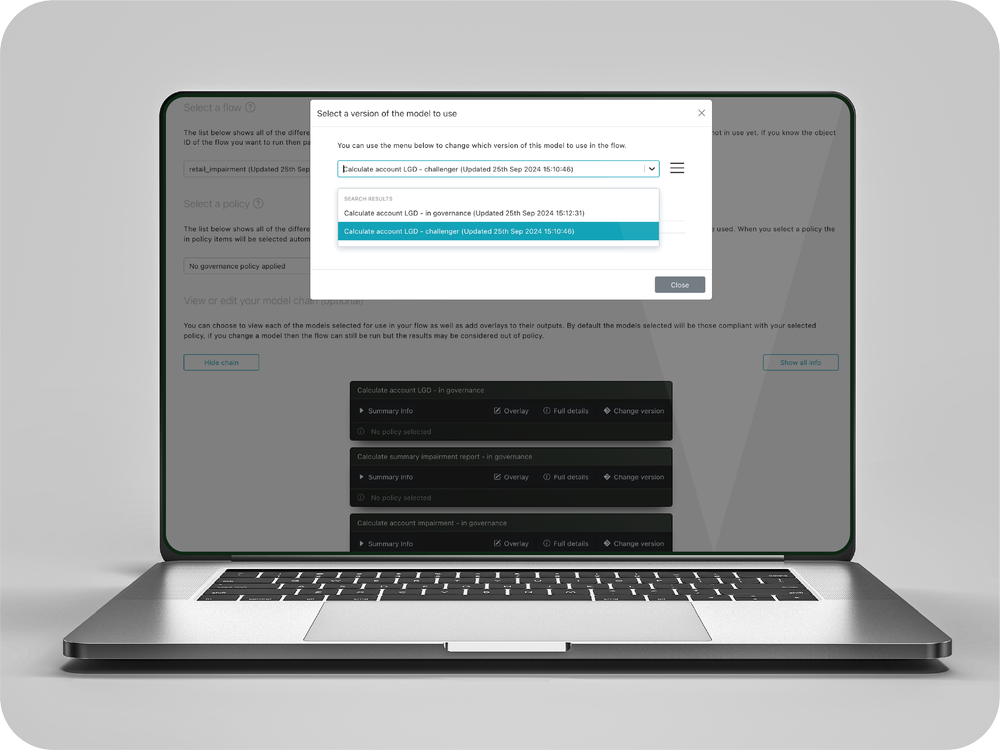
Governance ready
Complete traceability to versioned code and data
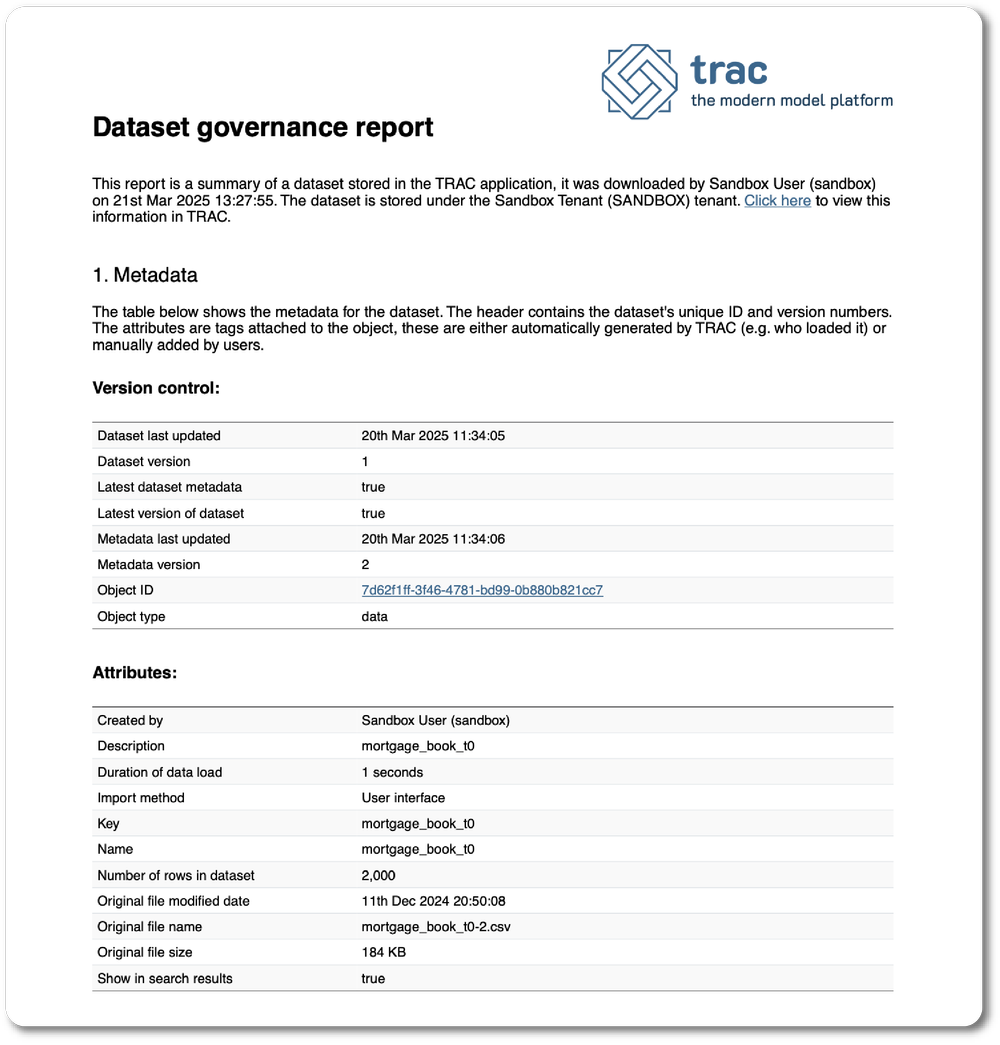
Via an append-only data model trac retains an immutable history of all data. Automated governance reports includes
- Object & version ID
- Name, description, business tags
- Lineage (e.g. source system)
- Data schema (fields, types etc...)
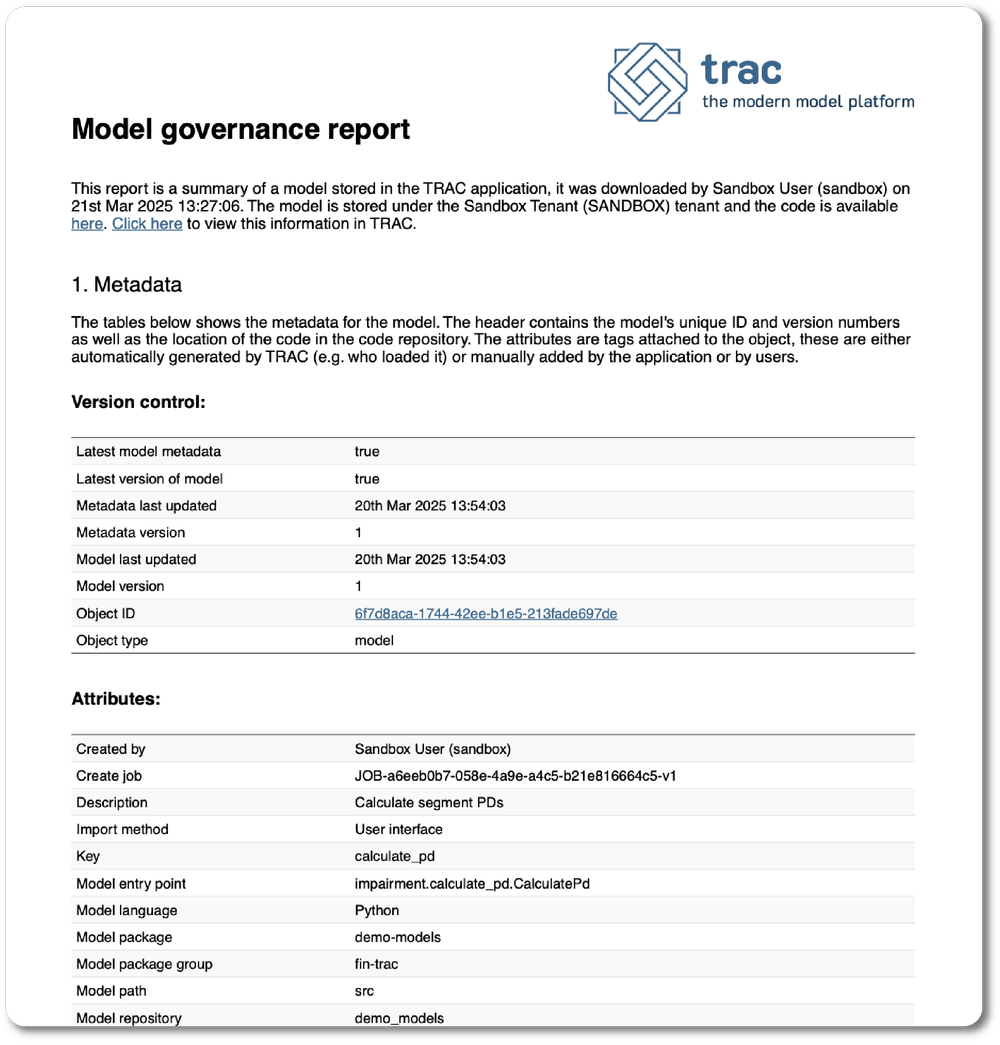
Using your version control system, trac builds a complete version of all model changes. The automated governance report includes:
- Object & version ID
- Name, description, business tags
- Lineage (e.g. commit hash)
- Schema (inputs, outputs, parameters)
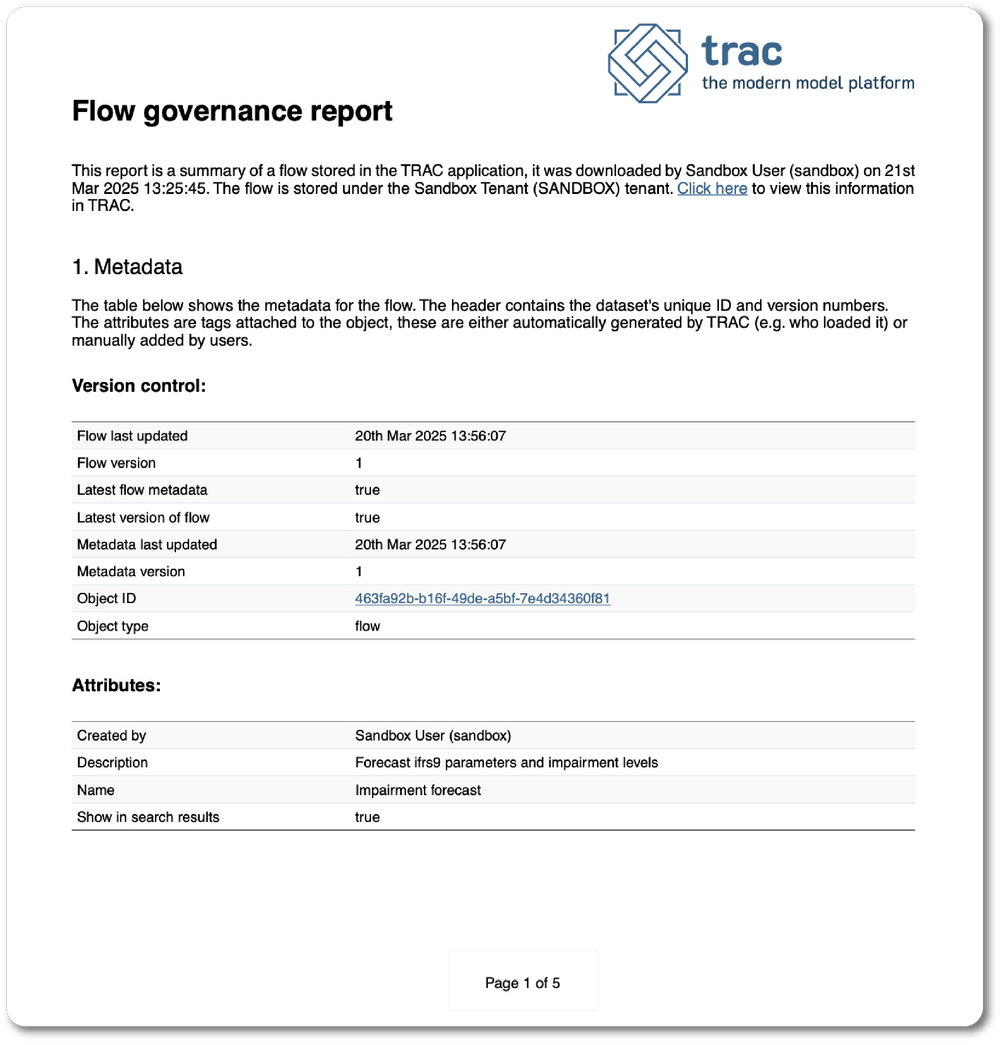
Flows are reuseable calculation blueprints which trac can run on demand. The automated governance report includes:
- Object & version ID
- Name, description, business tags
- Lineage (e.g. creation date)
- Visual representation of the graph
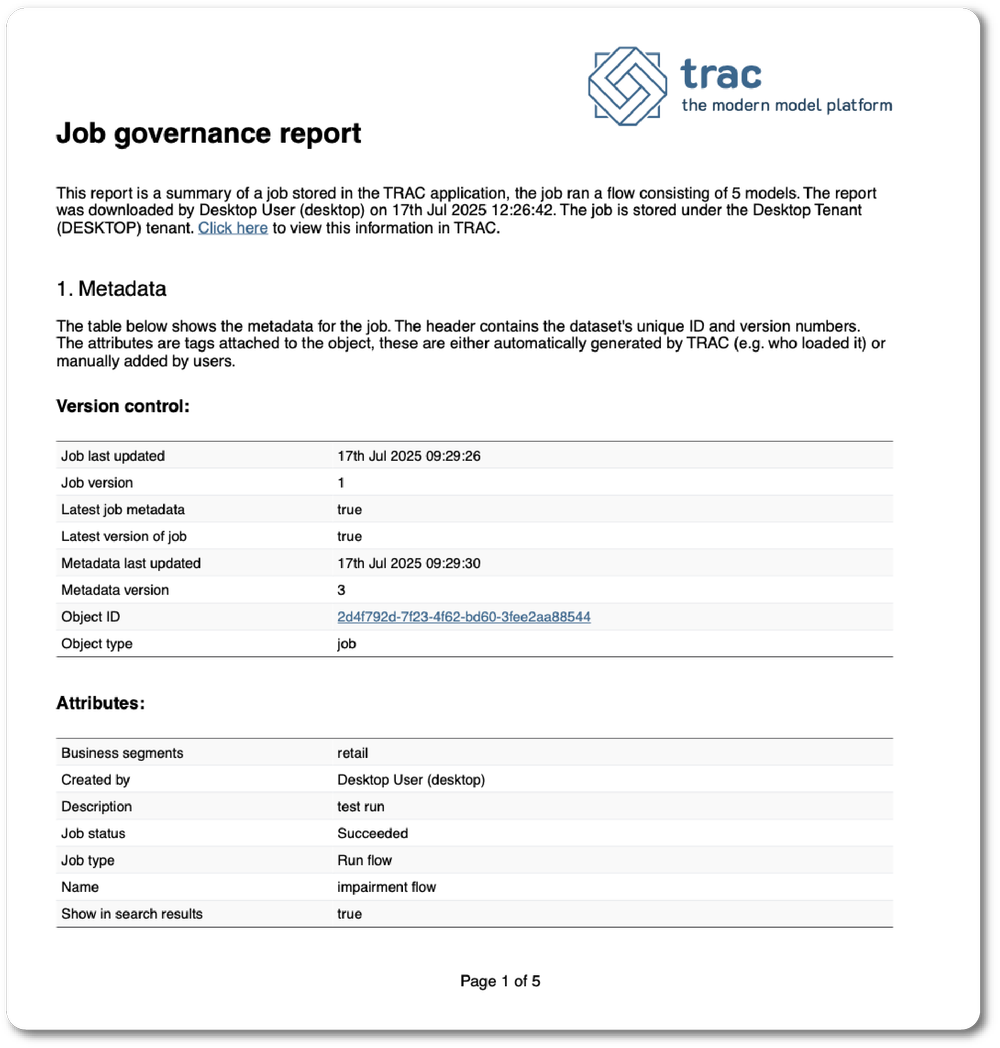
The instruction used to launch a calculation is also it's permanent audit record. The automated governance report includes:
- Job ID
- Lineage (run on, run by)
- Details of the Flow that was used
- Schemas and IDs for all inputs
- Numerical parameter values
- Schemas and object IDs for all outputs
